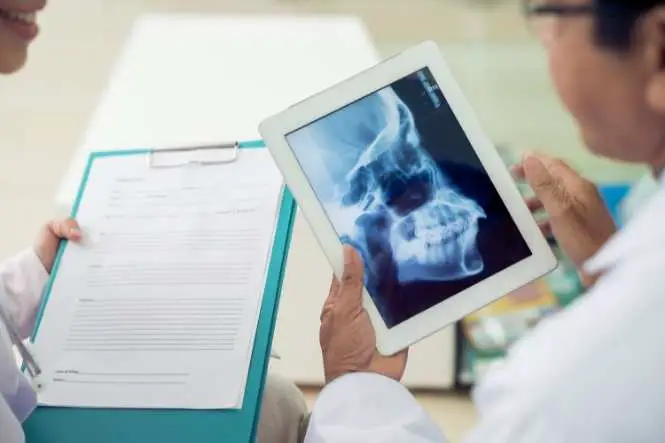Sometimes during the course of a criminal investigation and its subsequent autopsy the pathologist may find his or herself faced with the task of identifying the sex of a skeleton after decomposition.
Obviously before decomposition there are detailed differences between the form of a male or a female but once decomposition has taken a hold and carried out the unpleasant tasks that nature has intended, all that remains is the skeletal form with teeth and possibly some hair to work with.
Steps in Determination of Sex
Of course having teeth and hair does not always constitute enough material to make identification so the pathologist with perhaps the help of a forensic anthropologist will try to first of all work out what sex the skeleton was in life.
The determination of sex in skeletons is only possible once the male or female has reached adolescence or adulthood. Sexual dimorphism is slight in pre-adolescent children so this is a difficult task to perform if the skeleton is that of what might be a child.
A common way in which a pathologist and anthropologist might differentiate between male and female is quite simply bone size. This of course is not always accurate but for the most part male bones are larger in size to female bones and are so because of the addition muscle that may build up on the male body through adolescence and into adulthood.
The pelvis area is another good way of differentiating between the sexes. A female will have a larger sub-pubic angle to that of a man and this is obviously indicative of child bearing requirements in the female that are not required in the male of the species. This difference is noticeable across all species in nature where birth is from the womb. The male’s sub-pubic area is less than ninety degrees whilst the female’s is more.
The area around the pelvic inlet (in the middle of the pelvic bone) is larger in females than in men again with relevance to child bearing. The skeleton of a female who has given birth will be identifiable by the fact that this space will have widened upon the birth of a child and although it will contract it will not contract fully back to its original size.
Body Part Clues
The acetabulum – the socket in the pelvis, which is used to secure the head of the femur – is larger in males than in females.
Another area of the body in which the difference between males and females can be identified during the examination of a skeleton is the head and skull. There are several characteristics that are visible different in the male and female skull and they are:
- The chin is squarer in the skull of a man than that of a woman, who will tend to have a slightly more pointed chin
- The forehead of the male will slant backwards where again with a female it will be slightly more rounded
- Males seem to have a brow ridges whereas females do not.
All in all there are plenty of differences between the male and female skeleton and if the pathologist and anthropologist have a complete skeleton to work from they should be able to make a positive determination as to the sex of the deceased before they died.

